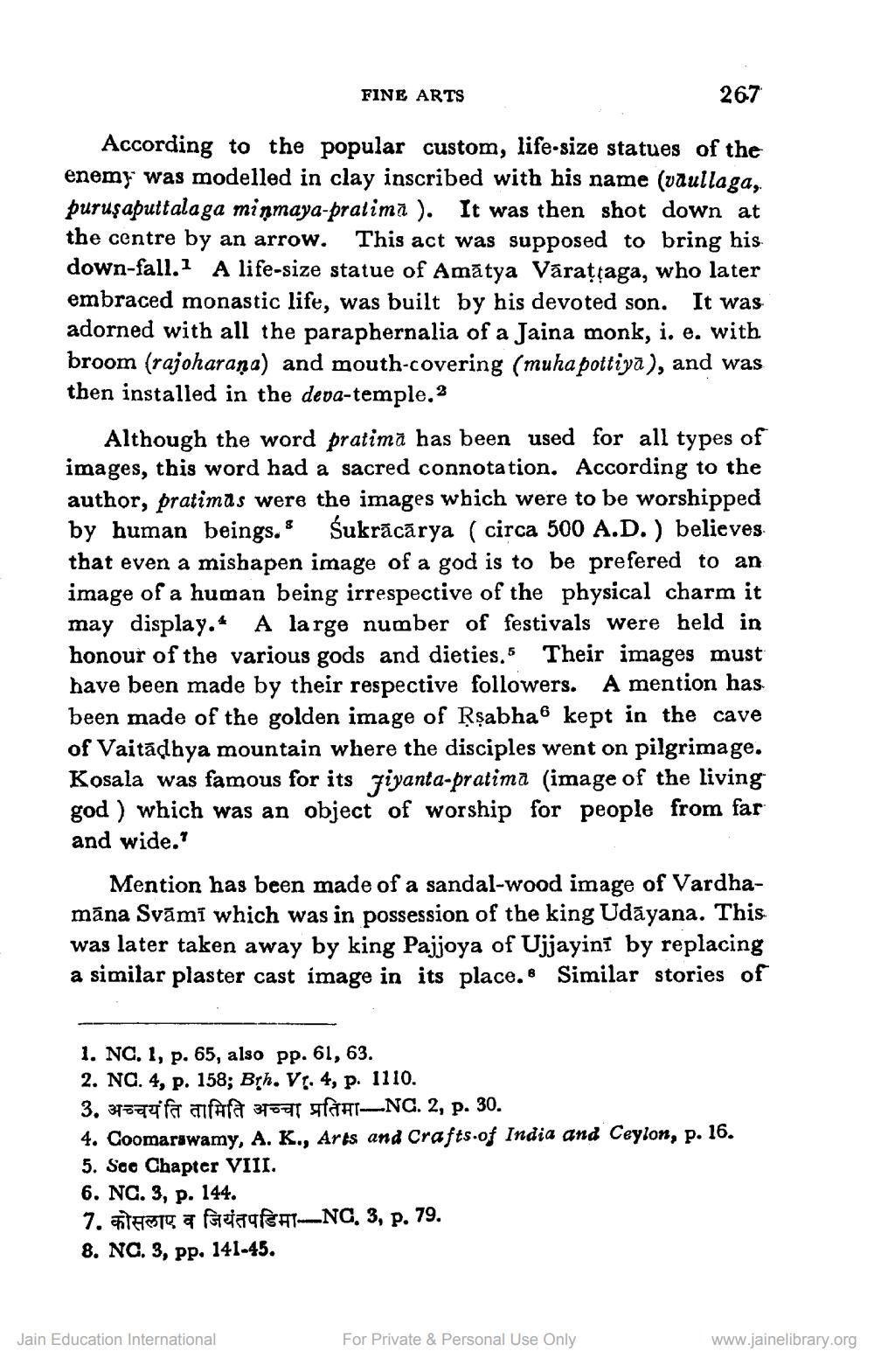________________
FINE ARTS
267
According to the popular custom, life-size statues of the enemy was modelled in clay inscribed with his name (vaullaga, puruşaputtalaga minmaya-pratima ). It was then shot down at the centre by an arrow. This act was supposed to bring his down-fall. A life-size statue of Amātya Vāraţțaga, who later embraced monastic life, was built by his devoted son. It was adorned with all the paraphernalia of a Jaina monk, i. e. with broom (rajoharana) and mouth-covering (muha pottiya), and was then installed in the deva-temple. 3
Although the word pratima has been used for all types of images, this word had a sacred connotation. According to the author, pratimas were the images which were to be worshipped by human beings. Sukrācārya (circa 500 A.D.) believes that even a mishapen image of a god is to be prefered to an image of a human being irrespective of the physical charm it may display.* A large number of festivals were held in honour of the various gods and dieties. Their images must have been made by their respective followers. A mention has been made of the golden image of Rşabha6 kept in the cave of Vaitādhya mountain where the disciples went on pilgrimage. Kosala was famous for its Fiyanta-pratima (image of the living god ) which was an object of worship for people from far and wide.'
Mention has been made of a sandal-wood image of Vardhamāna Svāmī which was in possession of the king Udāyana. This was later taken away by king Pajjoya of Ujjayini by replacing a similar plaster cast image in its place. Similar stories of
1. NO. 1, p. 65, also pp. 61, 63. 2. NO. 4, p. 158; Bph. V. 4, p. 1110. 3, 35ayfa afara Broat far-NC. 2, p. 30. 4. Coomarswamy, A. K., Arts and Crafts.of India and Ceylon, p. 16. 5. Sce Chapter VIII. 6. NO. 3, p. 144. 7. Il a feetagsaNC, 3, p. 79. 8. NO. 3, pp. 141-45.
Jain Education International
For Private & Personal Use Only
www.jainelibrary.org




